Many people like the peace and calm of having a beautiful fish tank. People who want this should get an aquarium with cold water. Fish that live in cold water seem to be very interesting.
Getting some live plants for your aquarium may seem like the only thing you need to do. There are many different types of live aquarium plants to choose from, and each one has its own set of care needs that must follow.
Table of Contents
What Is a Cold-Water Aquarium?
You can think of a coldwater aquarium as a tank filled with cold water. However, in this case, “cold” means being kept at or near room temperature without the help of a heater. Because it doesn’t need to be heated, it is called “cold water.”
On the other hand, people sometimes don’t have time to do the necessary maintenance, which leads to a deteriorating ecosystem and, tragically, dead fish. On the other hand, if you have a giant, beautiful aquarium, it could look great in your home.
If it isn’t salt water, it could be freshwater. Most cold-water fish, such as goldfish and koi, can live at temperatures between 58°F and 65°F (14°C-18°C). They can handle temperatures as high as 75°F (24°C) at their hottest. Because each type of fish has different needs, we suggest that you adjust the tank to meet the needs of the fish you want to keep in it.
12 Best Cold-Water Aquarium Plants
1. Moneywort
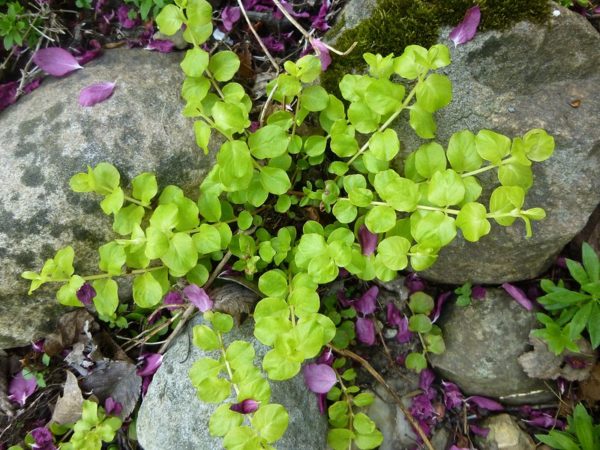
This low-maintenance plant, also called Brahmi by herbalists, is good for freshwater home aquariums because it doesn’t need much attention. It is easy to grow and doesn’t need a lot of attention.
Because this fish is in the right kind of light, its color is bright and almost lime-green, making it a great addition to any aquarium. They can grow above and below the surface, called “amphibious.”
Moneywort can grow taller than 12 inches tall when it gets the right conditions. There are many times when it grows horizontally until the water’s surface. The branches will grow out of the water if they aren’t cut back, which can be dangerous. Because it can produce both above and below the water level, it is used in both aquariums and vivariums alike.
2. Fairy Moss
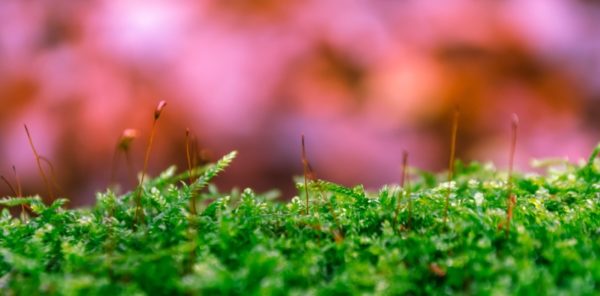
If this plant looks like fairy moss or Mosquito Fern, that’s what people call it. We often use plants in our aquariums without realizing how important they are.
There are many different kinds of Azolla plants, and they can withstand a wide range of temperatures, from 41 degrees F (5 degrees C) to as high as 113 degrees F. (45 degrees Celsius).
This floating plant proliferates and can be kept in cold water tanks easily. Under normal circumstances, the plant is green, and when it is in direct sunlight, it turns a bright scarlet color.
3. Java Fern
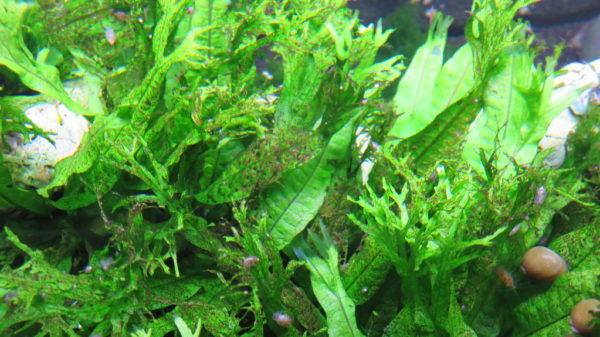
Java Fern is a popular aquarium plant because it is easy to find and care for. Water lilies are a good choice for people who don’t know how to manage and maintain aquatic plants. Java fern plants have broad green leaves that are strong enough to withstand most mistakes made by first-timers.
They can also handle very different water temperatures and don’t need a lot of CO2. Java fern plants don’t need a lot of CO2. They are often able to live in tanks with very little light. Another good thing about Java Fern is that it doesn’t grow as quickly as other aquarium plants. This means it needs little to no attention and doesn’t have to deal with too much overgrowth, which is excellent.
4. Anacharis
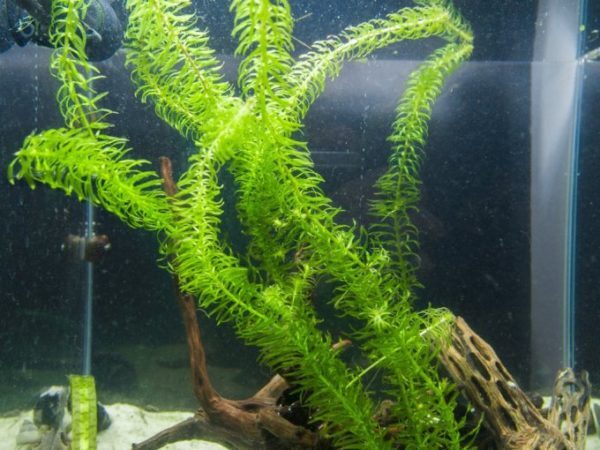
Anacharis is one of my favorite cold-water aquariums because it is cheap and grows quickly. There is a lot of thick, bushy growth that looks like seaweed, and the dark green color is suitable for any aquascape.
They could also uproot your Anacharis if you don’t use plant weights to keep them down long enough for the roots to become strong.
Anacharis might be hard to grow in gravel because of its short roots, making it easier for the plant to grow. It can also be let loose in the water and move around freely. So long as it is free-floating, it can get as much light and CO2 as it wants, but it will eventually cover the plants below it.
5. Hornwort
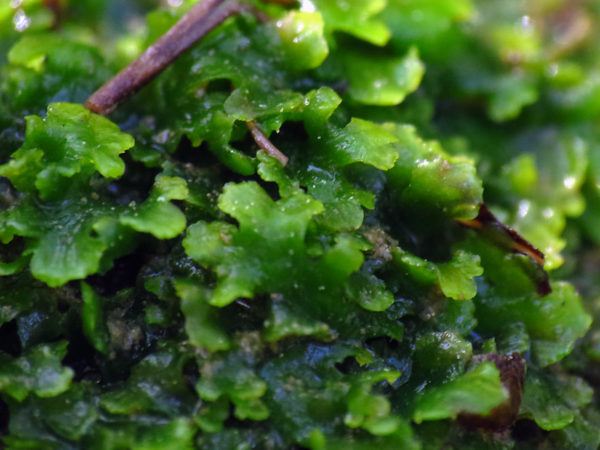
This aquarium plant is very hardy and proliferates, which might be seen as a negative in the wild because it has been known to take over and control rivers in its native habitat completely. This plant is very hardy and grows quickly. There have been times when this has become a problem in places like New Zealand, where it is taking over native plant species.
Hornetwort is one of the easiest plants to grow in an aquarium, and it can be grown either floating or anchored to the bottom of the tank.
This plant grows quickly and gives your fish a place to hide and hide from predators in your tank. Leaves fall off of it often, which might be good food for some fish. If it gets too many leaves floating on the surface of the water, you can pick them up with a fine net.
Hornwort is a beautiful plant with dark green leaves. In warmer waters, there may be lighter green tints in the leaves. Hornwort is a plant living for a long time and can be found in many places.
6. Water Hyacinth
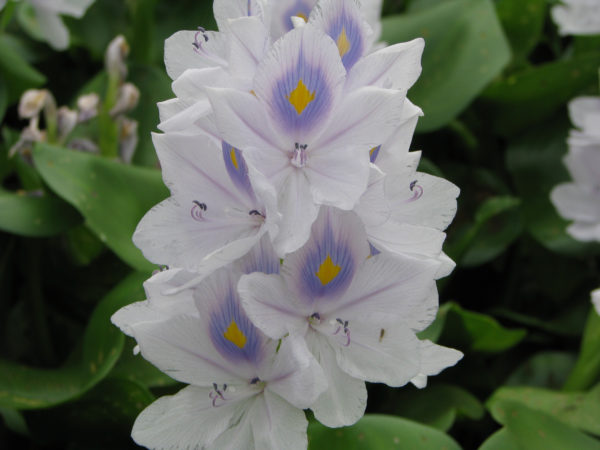
We may also find Eichhornia crassipes, also known as water hyacinth. This plant is very adaptable and can grow in many different places.
On the other hand, this plant is so hardy that it is on a list of the world’s 100 most invasive plants, which is the most serious one.
Water hyacinth can grow in even the most difficult of places. It can withstand water temperatures from 50 to 104 degrees Fahrenheit (10 to 40 degrees Celsius).
This aquatic plant floats in the water and has beautiful, six-petalled violet flowers on the ends of its stems. The plant is a big one, and to keep it in a small aquarium, its leaves need to be at least 4 inches (10 cm) long.
7. Anubias
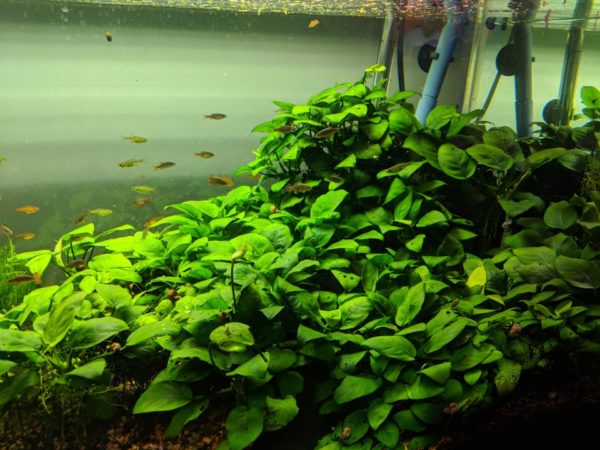
If Anubias is kept in low light, it is a solid cold water aquarium plant that needs very little light and CO2. As a result, it grows very slowly.
This beautiful plant has long-lasting, beautiful green leaves that make it an excellent plant for any room. People new to aquariums should choose it because it can thrive even in bad conditions and is very easy to care for. It is important to note that more light and CO2 make this plant grow more quickly.
If you want a plant that you can control how quickly or slowly it grows and how you can set up the right conditions to your liking, this is very important.
8. Marimo Moss
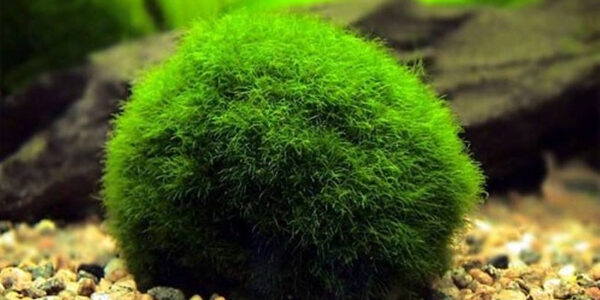
Marimo Moss balls are found naturally on the bottom of ultrapure coldwater lakes, safe from the weather. These lakes don’t have a lot of food in them. Moss balls may roll down the bottom of the pool with slow, cool currents because there aren’t any algae to fight off.
Marimo Moss balls are now available at most pet stores because they are exciting and beautiful. The bad news is that this plant is a little more challenging to grow than most people think. However, with a bit of help, your Marimo Moss balls are sure to succeed.
On the other hand, if they live in tropical aquariums like these, their growth slows down and stops. In addition, the high nutrient load in most aquariums may fade or kill the balls.
9. Rotala Rotundifolia
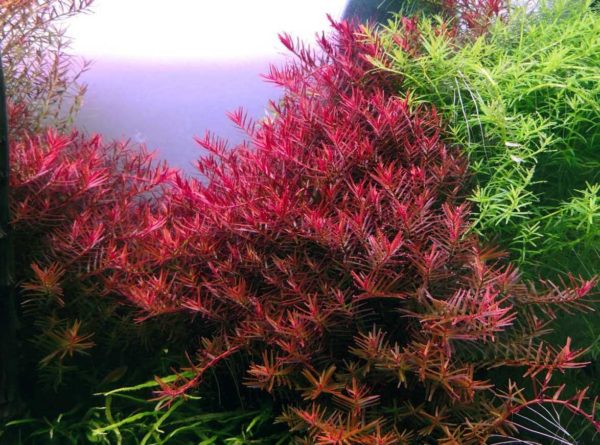
Rotala Rotundifolia is a plant that grows in Southeast Asia and has long, thin leaves native to the area. It has stems that are 15-30cm long. Rotala species are low-maintenance plants that can be used in most home aquariums, but they need a lot of light to grow their red leaves.
Fish love this plant, so if you have fish that eat plants, you might not be able to keep it for very long. It will, however, be a great addition to a community aquarium that already has a lot of small, calm tropical fish in it.
Because it’s hard for light to get to the lowest leaves when there isn’t a lot of light, this could cause problems. The plant should be cut down regularly.
10. Jungle Vals
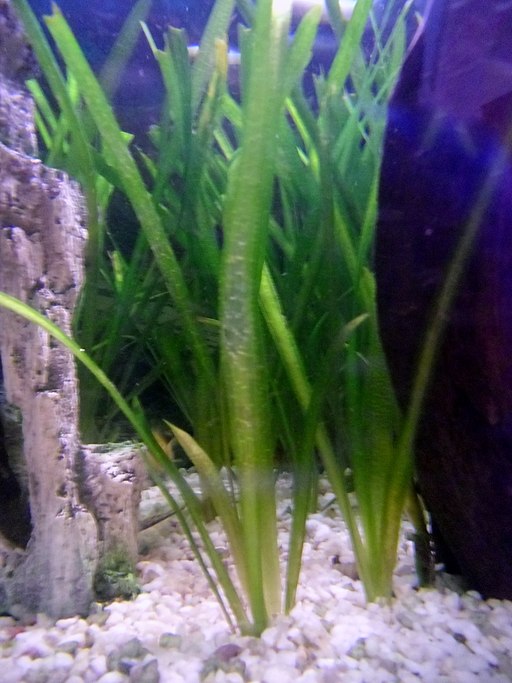
In an aquarium, Jungle Vals is a plant that grows quickly and looks like natural grass in a tank. It grows well in bright light and doesn’t need CO2 because its native environment is shallow and salty, both of which don’t have enough CO2.
Trimming is essential to regularly keep your aquarium at the right size and spread out across the tank. When you grow them with other plants that live at the bottom of your tank, they form grassy carpets on the bottom of the tank.
The bright green color is very eye-catching and exciting, especially when mixed with other plants that live on the bottom of the water. Because it can grow quickly, it is excellent for people who want to keep up with the pruning care.
11. Pygmy Chain Sword
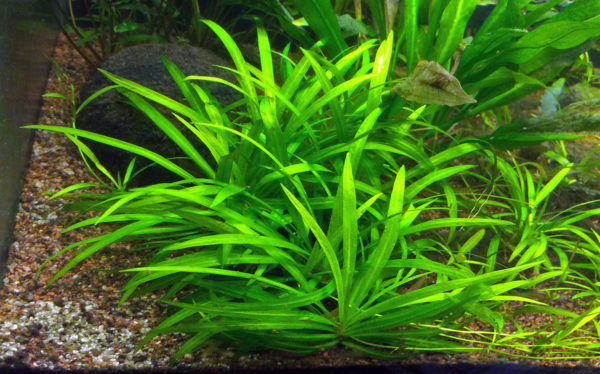
It is also possible for Pygmy Chain Sword to make seeds to grow new plants and spread existing ones.
As long as it gets the proper lighting, it can make a beautiful carpet of light green. It will grow and spread quickly, too.
It does well at most temperatures between 65 and 80 degrees. It grows better if it is rooted in soil or a plant substrate because it needs a lot of nutrients to live.
The runners that grow from healthy plants will spread across the bottom of your aquarium, so make sure you have healthy plants. It’s possible to split the roots of a young plant to grow apart from each other. This is the best way to add more plants and make a carpet for the front of your aquarium.
12. Dwarf Hairgrass
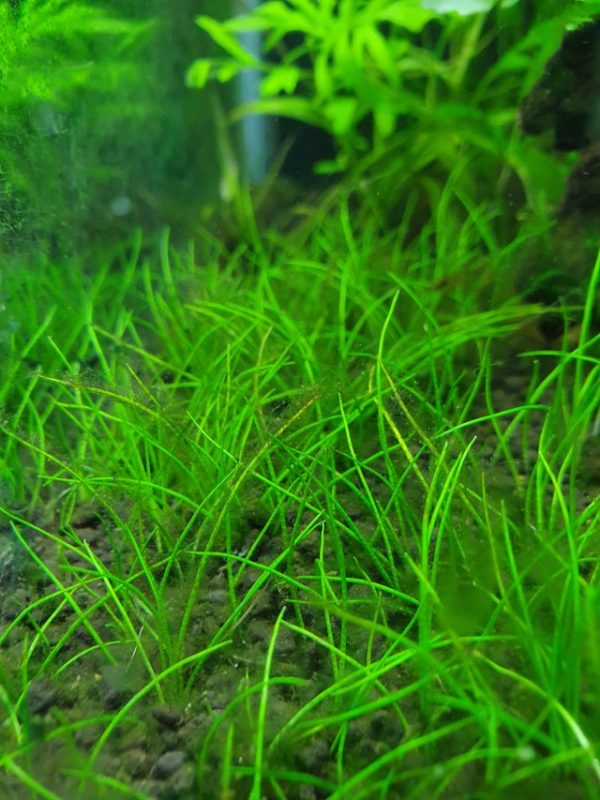
Dwarf hair grass is a very hardy plant and can grow in many places. It is best known for making dense carpets in aquariums and other aquatic environments. The plant is small, has needle-like green leaves, and lasts a long time.
Dwarf hair grass is one of the best plants for carpeting in the aquarium hobby. It’s suitable for both new and experienced aquarists, and it’s a good choice for both. Many people call this plant “DHG,” “Needle Spike Rush,” and “Spike Rush.”
How Is Cold Too Cold for An Aquatic Plant?
Many plants that live in water can withstand temperatures between 1 and 4 Degree Celsius, and they’ll even stay fresh longer than expected if they are exposed to a lot of hot air.
Only when it’s freezing (below freezing point) do people also use 72-hour heat packs to make sure the plants don’t get too cold at night. Heat packs aren’t needed when the temperature is only a little below zero degrees. These, on the other hand, could get very heated and even hurt the plants, so be careful.
There is a good chance that many of these water plants come from tropical areas, so it makes sense to think that they would prefer warmer conditions. One of the most common temperatures in aquarists’ tanks is around 78F. (25.5C). Suppose the plants in the aquarium are cared for in the right way. They will thrive at this temperature for the most part (e.g., sufficient CO2 level, a good source of light, enough nutrients).
In most aquariums, they can grow and reproduce at a steady rate. On the other hand, these plants don’t live in nature under the same conditions as now.
Why Should You Put Plants in A Coldwater Aquarium?
The most important thing that live plants do for your aquarium is made oxygen (O2) and remove carbon dioxide (CO2) and ammonia (NH3) from the water, which is suitable for your fish. If you put live plants in your aquarium, you might be able to make a small world for your fish. Keep them healthy with this.
Plants help fish by giving them places to hide from the sun and rain. In some ways, they may help cut down on the number of algae that grows in the world because they compete with algae for food.
There are many chemical and physical benefits to aquatic plants and their beauty. Aquatic plants are essential if you want a happy and healthy fish tank.
Filtering was the first thing done. Despite their small size, aquatic plants are very good at getting rid of waste from fish, even though they are minimal.
They also help get rid of things that aren’t good for the environment, like trash. Plants that live in the water get nitrates from the soil, leaves, and water itself.
It will be easier for you to get this benefit if you use plants that live in water. If you want to filter your water with plants, you can’t do that. Because it should be used as an additional source of chemical filtration, not the main one, it should not be the only one.
What Kind of Fishes Can Live in A Cold-Water Aquarium?
They grow so big that they can only live in ponds outside. The goldfish is the most common cold-water fish species, followed by its bigger cousin, the koi, which are very similar to each other, and they are both very similar.
Many interesting fish species don’t need a warm tank to live. Fish that like cold water can be found in all temperate zones on all the planets that have land.
Frequently Asked Questions
They live in water between 60- and 75-degrees Fahrenheit (15 and 24 degrees Celsius), but some of them prefer water that is a lot cooler than that. This isn’t good for tropical fish.
Most fish like to have plants in their tank. Home aquariums should have plants, and the conditions that allow plants to grow and thrive are also suitable for fish to be happy and healthy.
Plants may improve water quality by taking in nitrates and other nutrients released when organic waste breaks down in the water. This helps keep algae at bay.
Plants are great for a breeding tank because they make fish more likely to reproduce and protect fish fry as they grow.
Plants help oxygenate water by making oxygen and taking in CO2 as part of the photosynthesis process. The plants give the fish oxygen, and the fish exhale CO2, which the plants use to make more oxygen.
Conclusion
In a fish tank, living plants help make it a good place for your fish to live by giving them oxygen and cleaning the water with nitrates and other compounds that they use as food. Plants also add to the look of your freshwater tank by protecting fish that are afraid, small shrimp, and fish fry.
No related posts.
